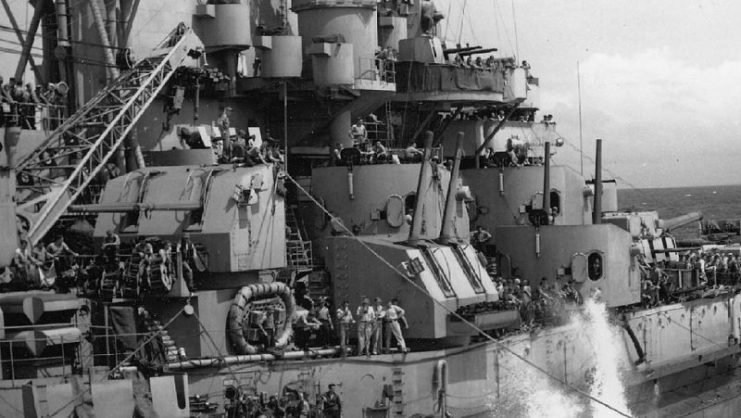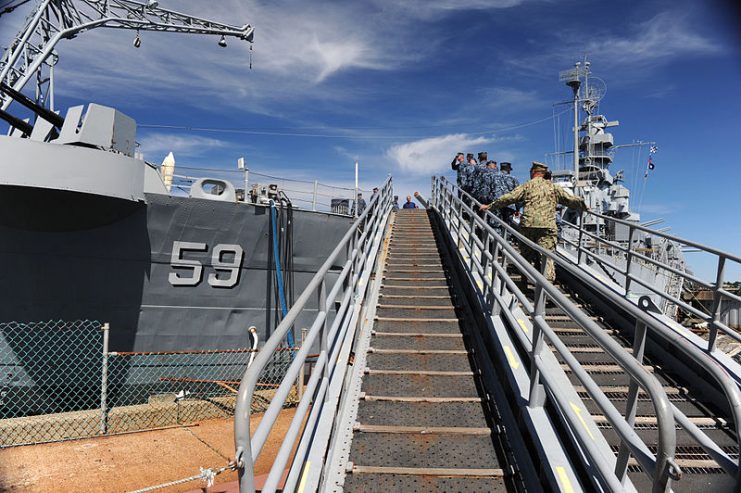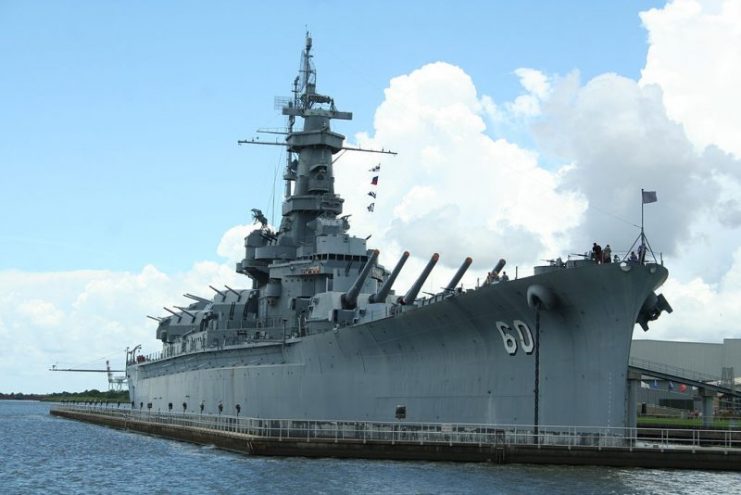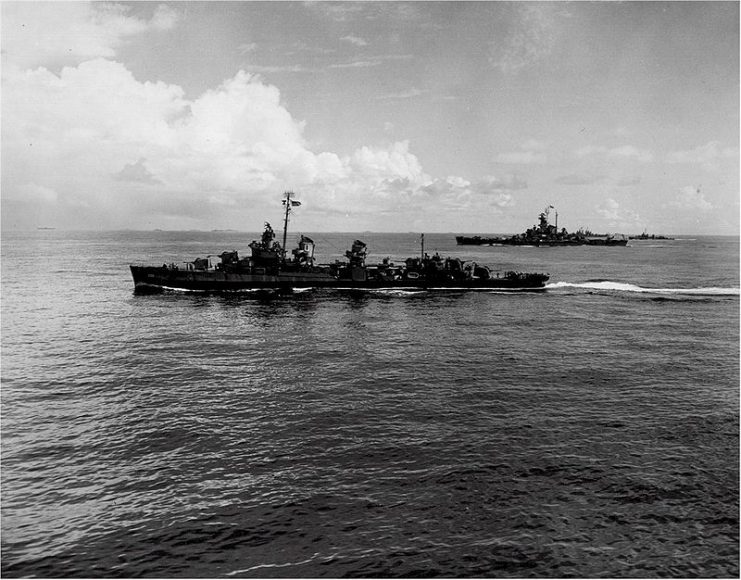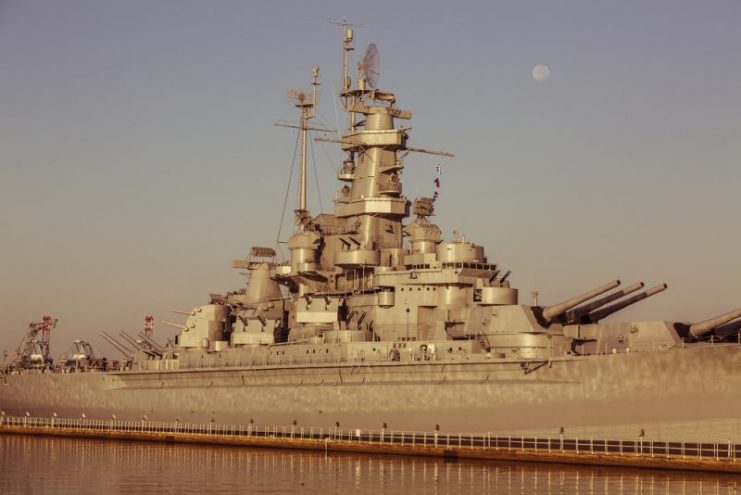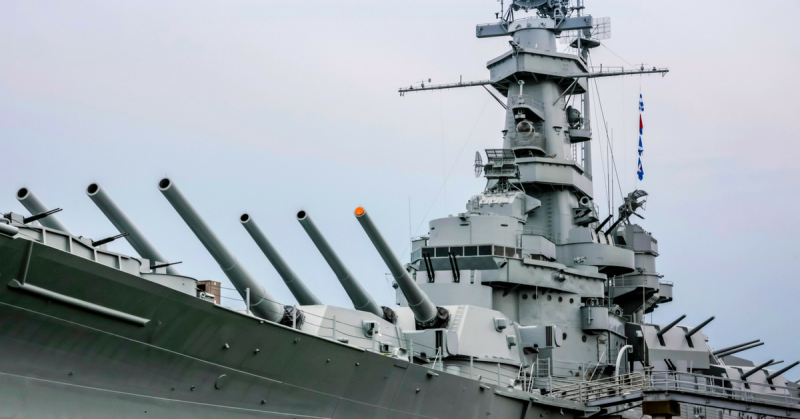During the late 1930s, as the world drew closer to the Second World War, the General Board of the United States Navy met to discuss the two North Carolina-class battleships which had been assigned to the FY1937 building project.
The initial suggestion was for two more North Carolinas to be added to the program, but Chief of Naval Operations Admiral William H. Standley wanted the new ships to also be of a new design. Thus, the beginning of the South Dakota-class ships was marked.
The design was first drafted in March 1937, and several designs were proposed in a bid to eliminate all or most of the deficiencies known in the North Carolina-class battleships, without significantly increasing weight. Such deficiencies included inadequate subaquatic protection and outdated turbine engines.
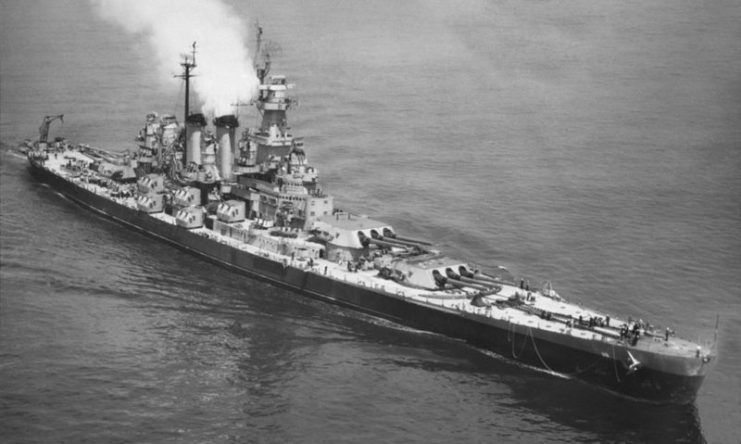
Also, the North Carolinas had insufficient space to act as flagships. The final draft for two battleships was accepted on 4 January 1938, and on 4 April 1938 the ships were formally ordered.
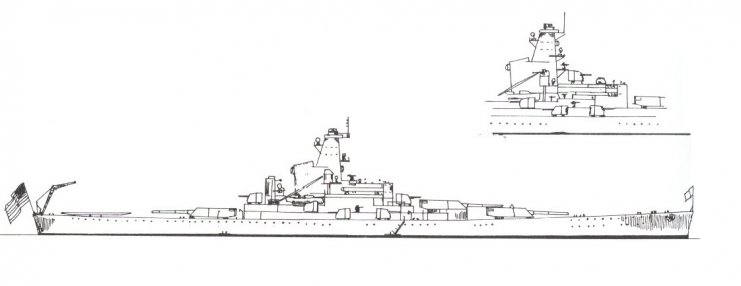
Due to the worsening situations in Europe and Asia and increasing signs of an outbreak of war, Congress approved the production of an extra two battleships based on the new design.
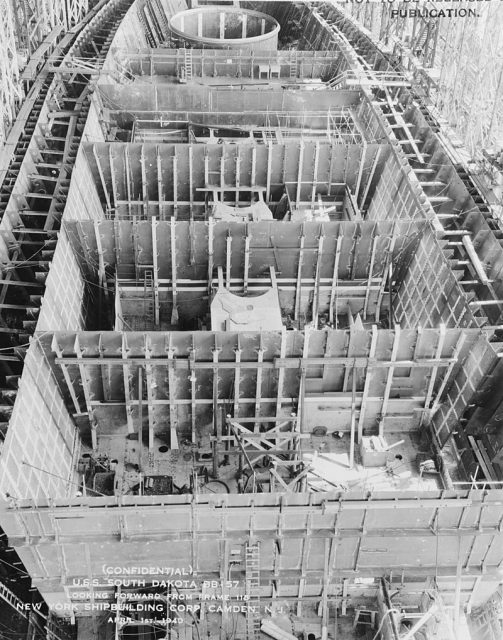
Generally, the South Dakota-class battleships had an overall length of 680 feet, and a standard displacement of 39,200 tons while displacing 49,861 tons in full load. The ships were propelled by geared steam turbines provided by General Electric and Westinghouse, and had a speed of 27.5 knots and a range of over 15,000 nautical miles.
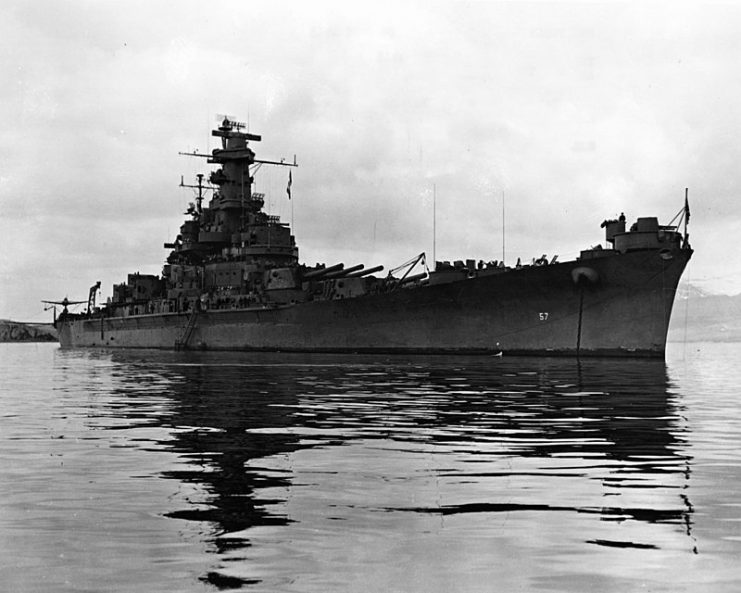
For armament, they had a main battery of nine 16″/45 caliber Mark 6 guns, similar to the North Carolinas. The secondary armament was anti-aircraft guns comprising twenty 5-inch/38 caliber dual purpose guns, 64 Bofors 1.57-inch/56 guns, and 77 20mm/70 guns.
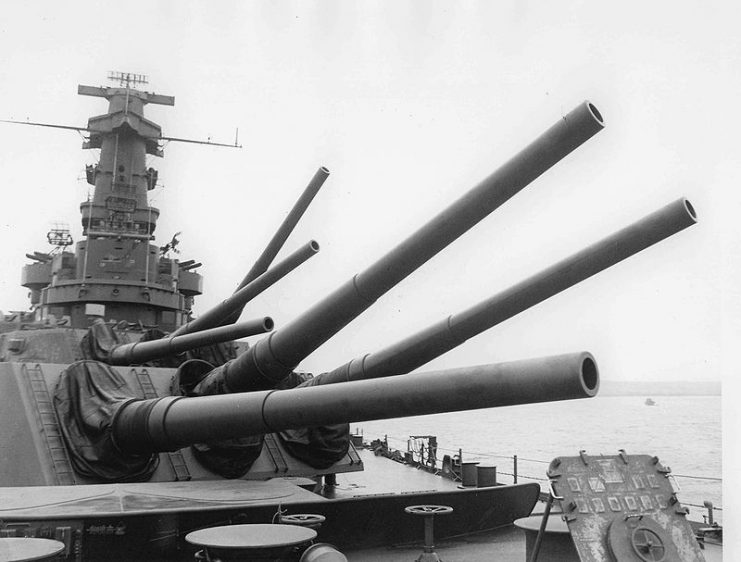
The South Dakotas, unlike the North Carolinas, were designed to withstand 16-inch shellfire. Their immune zone against the 2,240lb projectiles ranged from 17,000 to 30,900 yards. They had significant main battery turret protection which was 18 inches thick.
Their underwater guard comprised four longitudinal torpedo bulkheads, which could absorb an underwater explosion equivalent to about 700 pounds of Trinitrotoluene (TNT) from a depth of up to 17.9 feet.
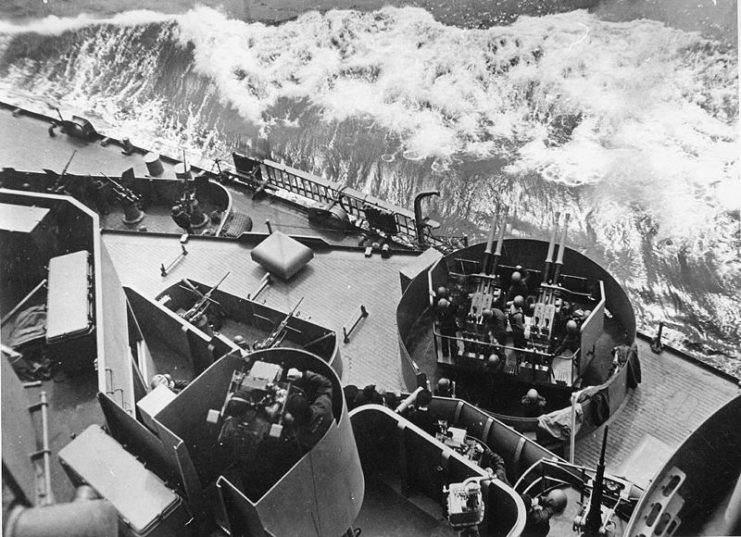
Within the South Dakota class existed four fast battleships: the South Dakota, Indiana, Massachusetts and Alabama.
The South Dakota was part of Task Force 64 (TF 64), a battleship group that also included the North Carolina-class ship Washington and four destroyers. Together they intercepted a Japanese bombardment force on 15 November 1942.
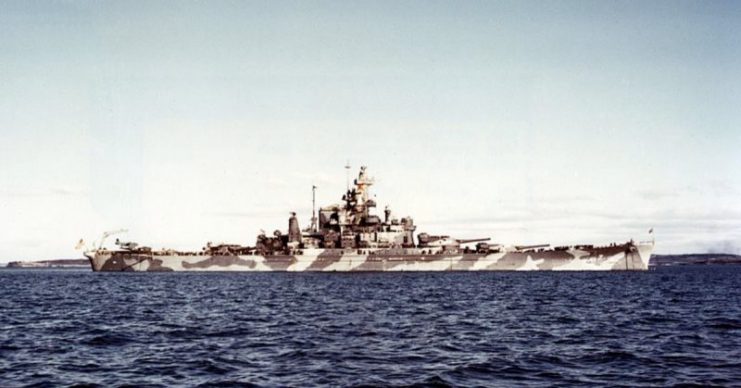
In the Second Naval Battle of Guadalcanal, TF 64 damaged Japanese cruisers Takao and Atago and forced the scuttling of the battleship Kirishima and destroyer Ayanami.
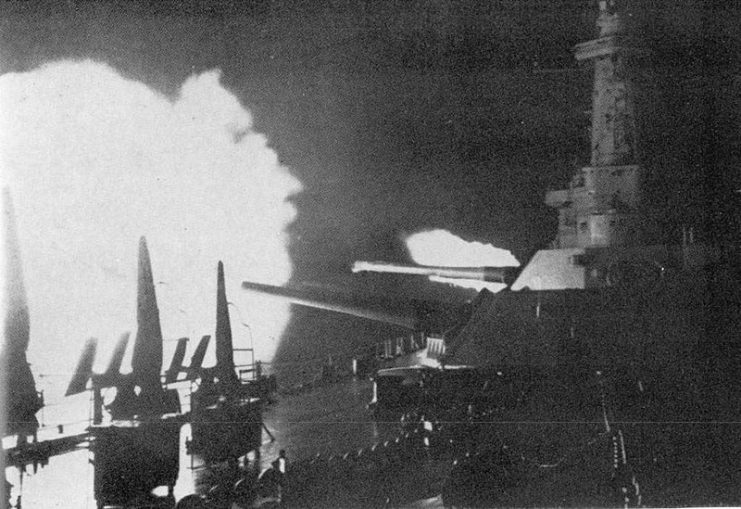
The South Dakota also took part in the Battle of Tarawa among its other battles. She was present at the Surrender of Japan in September 1945. On January 31, 1947, she was decommissioned.
Indiana began operations off Guadalcanal when her sister South Dakota needed repairs. Her primary function was shore bombardment, in support of the Marines engaging Japanese forces on the island.
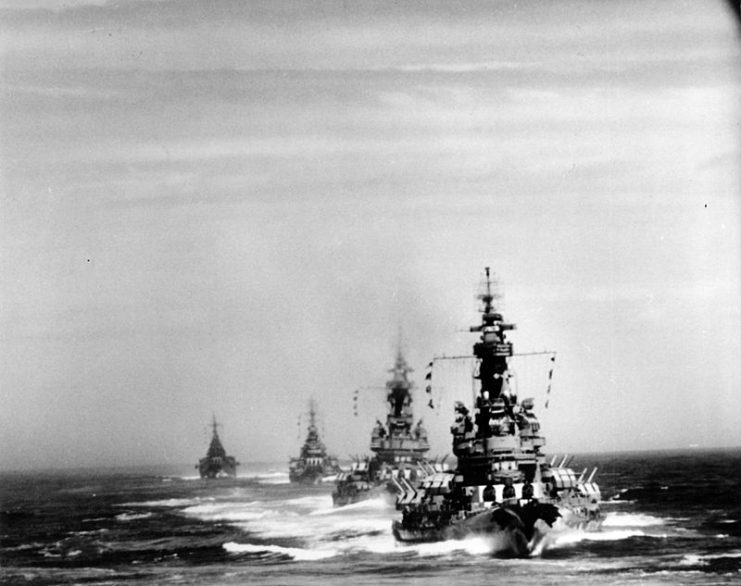
She later took part in the invasion of Tarawa, during which she shot down her first aircraft. Indiana was also involved in actions such as the invasion of the Marshall Islands, the invasion of Hollandia, the bombardment of Truk, and the bombardment of Iwo Jima, among others. She continued to serve until the end of the war in August 1945.
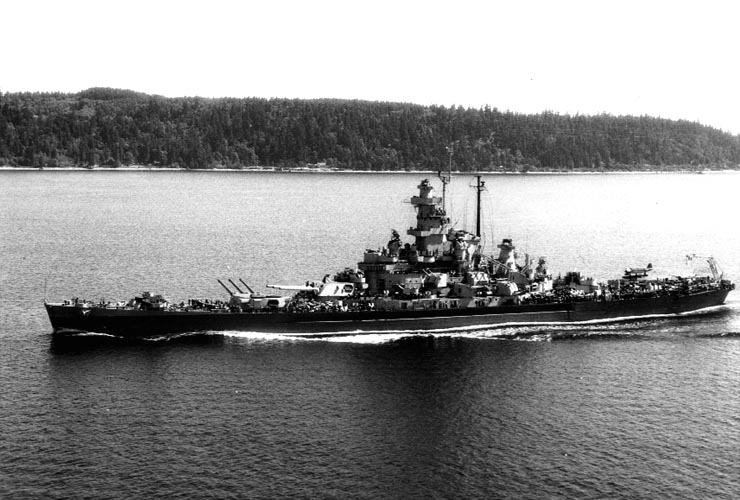
Massachusetts was the third ship in this class. She served as a flagship in Operation Torch, the Allied invasion of North Africa. Following her success in the North Africa campaign, she received an overhaul and was sent to the South Pacific theater to support operations there. On 27 March 1947, she was decommissioned and sent to the Atlantic Reserve Fleet.
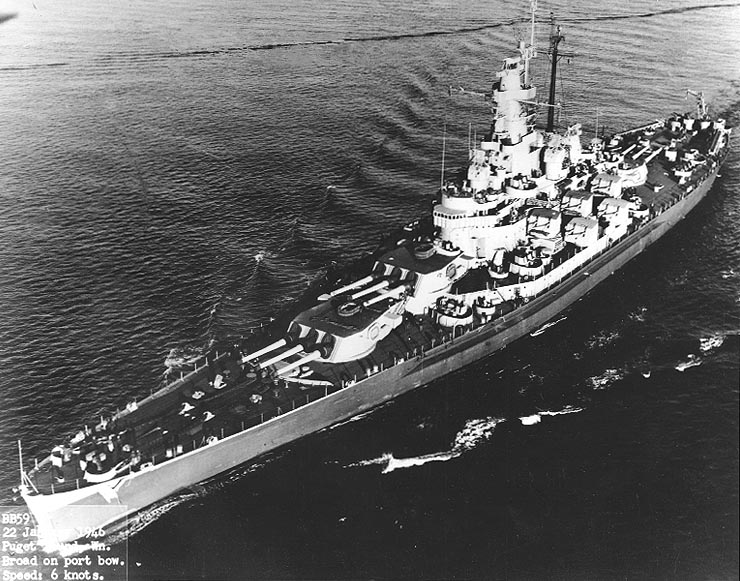
Alabama was the fourth and final member of the South Dakota class. In August, she was sent to the Pacific theater, where she served with the U.S. Third Fleet during amphibious missions in the Gilbert Islands.
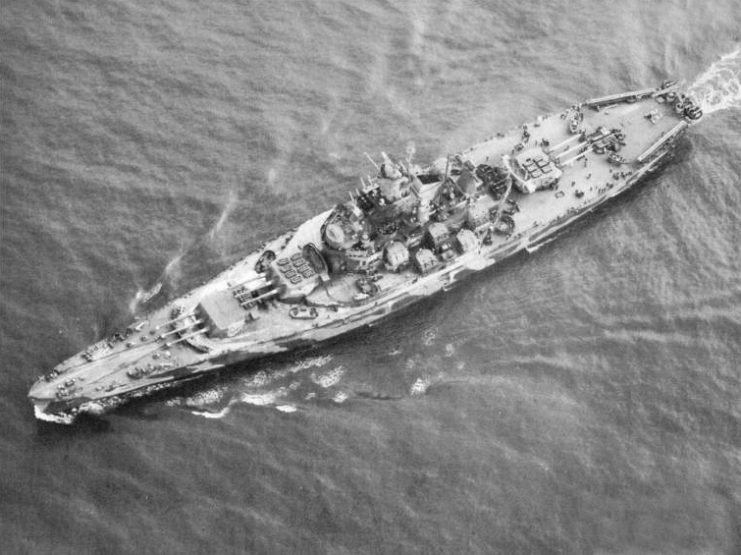
Alabama shot down her first enemy aircraft in March 1944, and during the Battle of the Philippine Sea, she conducted anti-aircraft operations. Later, she went to the Marianas Islands to provide gunfire support for ground troops. She also saw action in the Battle of Leyte Gulf and in the air raid at Kyushu. On 1 June 1962, she was removed from the Naval Register.
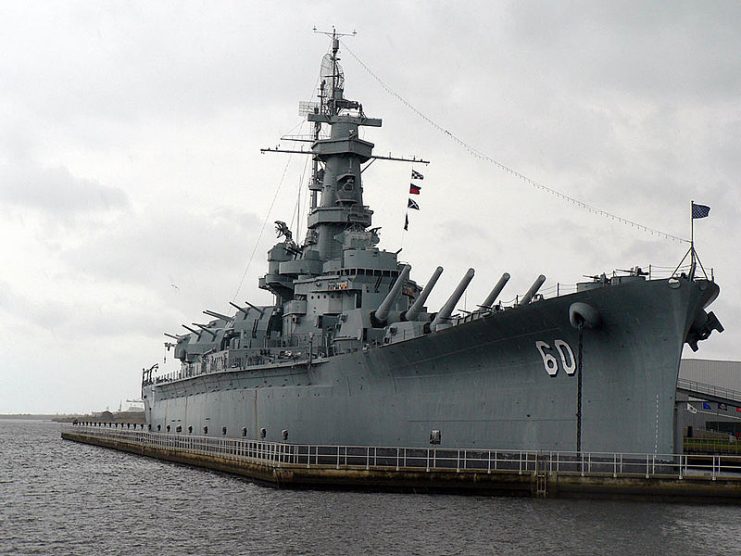
The South Dakota is memorialized at Sioux Falls, South Dakota. Indiana was sold for scrap for $418,387. Massachusetts is located at Battleship Cove, a maritime museum in Massachusetts. Alabama resides in Mobile, Alabama, as a museum ship and the main attraction of Battleship Memorial Park.
